Republic of China Tanks & AFVs
Origins: Chang-Kai-Chek army
The Republic of China Army (ROCA) (Pinyin Zhōnghuá Mínguó Lùjūn) is linked to the fundation in June 16, 1924 of the the National Revolutionary Army. For starters, we can go as far back as the Collapse of the Qing Empire in 1839-1912. A politically very turbulent country-continent, boasting the oldest civilization, assaulted by the West for the best of the XIXth Century (Throughout the the Opium Wars, Taiping rebellion, Tongzhi Restoration, First Sino-Japanese War, The Boxer Rebellion and The Russo-Japanese War). The collapse of the Qing dynasty in 1912 was just the summit of at least 70 years of national humiliations in the hands of foreign powers, securing their hold through unequal treaties. Many withing the well-edcated Chinese middle and upper class, not part of the traditional Qin elite, saw the problem layed within the very fabric of the Empire and its corrupted elites. The 1912 revolution saw the birth of the Republic of China, marked by a symbol, the sun on blue sky, complete contrast to the Dragon on golden yellow, the Imperial color since centuries.Articles to come
M8 Scott in Taiwanese serviceM10 GMC (Taiwan only)
M24 Chaffee (supplied in 1954)
M36 Jackson (supplied in 1957)
M8 Greyhound (supplied in 1957)
M48 (supplied in 1970?)
M60A3 (supplied in 1980?)
M113 (supplied in 1970?)
V-150 Commando (supplied in 1970?)
Type 64 Light Tank
CM-21 IFV
CM-26 Ammo Carrier
CM-27 Artillery Carrier
CM-11 Brave Tiger MBT
CM-12 MBT
CM-32 8x8 IFV
Kung Feng IV/VI
Thunderbolt-2000
The Republic under attack
The collapse of the Qing Dynasty in 1912 led to a republic being declared. However, this was not to last. When Yuan Shikai was elected president in 1913, his rule was fairly autocratic. He even declared himself Emperor in 1915, attempting to restore the monarchy. Provincial officials refused and began to rebel, and Yuan eventually died of uremia on June 6th, 1916. Fractured, divided, and lacking a strong government, local warlords began to assert autonomy, thus plunging the nation into the so-called Warlord Era. In 1925, the famous (or perhaps, infamous) warlord Zhang Zuolin acquired the first tanks to be operated by non-colonial militaries in China.These were Renault FTs sold to him by the French, which were locally armed with 37 mm (1.46 in) guns or ZB-33 machine guns. At this time, two parties with originally similar doctrines, the Nationalists (KMT/GMD) and the Communist Party (CCP), were vying for power. Both parties wanted a united China, had a Leninist political doctrine, and were democratically centralized. Encouraged by the USSR, who actually believed the KMT to be the most viable party, the parties partnered into an united front. In 1925, the Nationalist leader, Sun Yat-sen died of cancer, which can be seen as a turning point in the KMT-CCP alliance. Chiang Kai-Shek rose to power in the KMT, and was virulently anti-Communist. During the so-called “Northern Expedition” (1926-1928) from their base in southern China, the Nationalists intended to take back and unify the whole of China from rebels, warlords, and foreign imperialists.
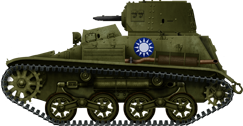
Type 94 Te Ke, Kuomintang
The Northern Expedition (1926-1928)
The Northern Expedition (1926-1928) In February 1926, the Nationalist Army reached Shanghai. At this point, a crucial ideological note must be made. The CCP at this time was led by leaders more inclined to Soviet style Communism, which stressed the role of the urban proletariat, contrary to Mao, who would rise to prominence in later in the mid-1930s, during the Long March. With the focus of the CCP in the 1920s being on urban proletarians, this meant that the CCP organized strikes and uprisings of urban workers in Shanghai, in order to help the Nationalists capture the city.For unknown reasons, the Nationalist Army stalled and did not support the workers in Shanghai. Some scholarship has suggested that this was an attempt by Chiang Kai-Shek to dampen Communist power, but this is not proven. In March, 1927, the CCP organizes strikes involving 600,000 workers, and only then did the Nationalist army take Shanghai. In April 1927, the so-called “White Terror” began, whereby the Nationalists began to purge China of Communists and similar unions. With a new police force, and rumors of the involvement of Warlords, foreigners, and organized crime, Chiang Kai-Shek began attacks on Communists, activists, and trade unions. The involvement of foreigners and organized crime was, no doubt, exacerbated by Chinese Communist scholarship, but the events of 1926-1927 proved one thing – a war between the CCP and KMT was inevitable."
The Nanjing war (1928-1937)
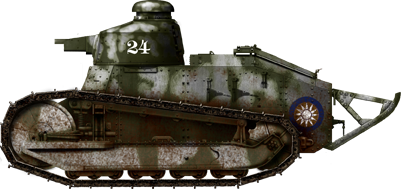
Renault FTs (from the Fengtian Army circa 1931) Note: The KMT is reported to have acquired, in various ways, 36 Renault FTs, several of which came directly from France. It seems therefore likely that 33 FTs were inherited from the Fengtian Army. These FTs were captured by Japan in 1931 and used by the Kwantung Army (a defense unit of the IJA) at the Mukden Incident, 1931). Renault FT with 37mm gun (several in 1927, during the Northern Expedition).
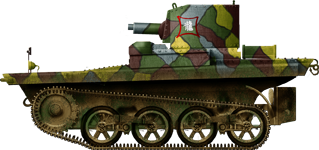
V-C-L Light Amphibious Tanks (whilst the KMT were sold some by Vickers, four of these were presumably appropriated from the Canton Provincial Government and took part in the Battle of Shanghai, 1937.)
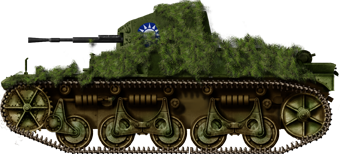
At least one Renault ZB, a Renault UE with a 7.7 mm (0.31 in) machine gun
Also from Vickers in 1930-1936, a Vickers Mark VI Machine Gun Carriers (with six trailers), Vickers-Carden-Loyd Light Amphibious Tank Vickers Mark E Type B, Vickers Mark E Type B with Marconi G2A radio, Vickers Dragon prime movers (unknown number, unknown date, presumably a similar time frame)
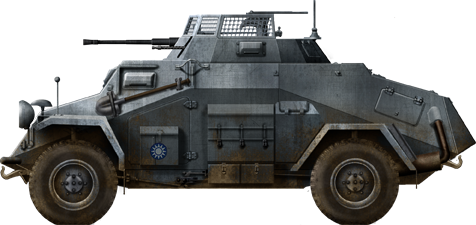
Sd.Kfz 222 of the KMT
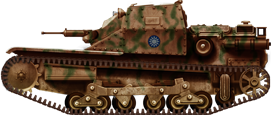
CV35 of the KMT
Tanks
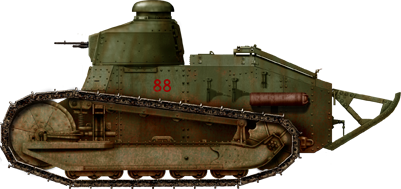
Renault FT Wb19 of the Fengtian clique 1925-31, of which some armed with 37mm Manchurian guns, some with MGs. Also, Armored Car and Tank Corps of Chungking (Chongqing) (1932) comprised the Clectrac 20 tractor tanks with Lewis Gun (no photographic evidence), Clectrac 30 tractor tanks with 37mm gun (no photographic evidence), GMC 1931 trucks with 37mm gun and two MGs (no photographic evidence). Guangdong (Canton) Provincial Government (1933), Vickers-Carden-Loyd Light Amphibious Tank (four arrived in early 1933)
Taking the advice of their German advisors, the KMT began seeking out arms contracts. Eventually, the Nationalists imported 60 tanks from Vickers between 1930 and 1936 and are as follows: 12 Vickers Mark VI Machine Gun Carriers with six trailers and spare parts (1930), 12 Vickers-Carden-Loyd Light Amphibious Tanks sold to the Canton (Guangdong) Provincial Government (1933). These were presumably appropriated by the Nationalist Army, as the total number of tanks fielded by the KMT in Shanghai numbered about 60, and excluding these 12 VCL Light Amphibious Tanks, the number bought by the KMT to that point only reached 48.
The figure of 60 also presumably excludes the Vickers Dragon, an armored gun tow tractor which was sold in small numbers (possibly a dozen) to China. 1 Vickers-Carden-Loyd Light Amphibious Tank (1933), 12 Vickers-Carden-Loyd Light Amphibious Tanks, 12 Vickers Mark E Type Bs (with 3200 47 mm/1.85 in rounds). Delivered in 1934 to Nanking/Nanjing and 4 Vickers-Carden-Loyd Light Amphibious Tanks, and 4 Vickers Mark E Type Bs (with 2860 47 mm/1.85 in rounds, and plenty of spare parts) in 1935 plus 4 Vickers-Carden-Loyd Light Amphibious Tanks, 4 Vickers Mark E Type Bs (with 2400 47 mm/1.85 in rounds) which had extended turrets equipped with Marconi G2A radios (1936).
Armored Cars
(to come)The second Sino-Japanese war (1937-45)
The Second Sino-Japanese War had its immediate roots in Beiping (Beijing) due to local tensions between the Imperial Japanese Army (who, under the agreement following the Boxer Protocol 1901, were allowed to station troops in Beiping) and the local Chinese garrison. To cut a long story short, on July 7th, Japanese troops were firing their weapons around Wanping Fortress.The local Japanese commander then declared that one of his men had gone missing, and demanded to search Wanping. The accusation was that the Chinese 29th Army of General Song Zhueyan inside Wanping must have kidnapped or killed him. Previously, the Chinese garrison did as they were told, but on this occasion, they refused to comply. Small gunfights broke out at Marco Polo Bridge, and these gunfights were usually over as quick as they started with ceasefires signed by local military and government officials.
However, Chiang Kai-shek was concerned that this might be evidence of further Japanese expansion into China, and took matters into his own hands. Chiang began moving his troops from central China up to the north in order to be ready for further Japanese aggression. The Japanese saw this as a threat, and by late July, both the Japanese and the Chinese were mass-mobilizing for war.
Japan was reluctant to declare war officially, but sent the elite Kwantung Army (along with local allied armies) into Beiping and Tianjin on July 26th – both of which were under Japanese control by the end of the month. Fighting in Hubei province was left to local military commanders such as Song Zhueyan. After various meetings within the Kuomintang, Chiang decided to meet the Japanese invasion with his best soldiers in Shanghai.
The Battle of Shanghai, 1937
Chiang used his best troops to defend Shanghai, the 87th and 88th divisions, who were trained by German advisors. An estimated 200,000 Chinese soldiers from across China poured into the city and took up defensive positions. In early August, the Japanese began landing in Shanghai from the Cruiser Izumo. The National Revolutionary Army attempted to destroy the Izumo through a daring aerial attack on 14th August.The Izumo sustained damage, but something went wrong with the bombing mission – numerous bombs were accidentally dropped on a very busy civilian area (which was also the International Settlement), and an estimated 1000 people were killed.
The Japanese realized that Shanghai would be a major battle and amassed 100,000 troops by early September, including an estimated 300 tanks of various classes (according to photographs, this included many Type 89 Yi-Go tanks). The city was heavily bombed by the Japanese air force in order to soften up resistance, but early attempts to capture the city by the Japanese caused stalemates along the narrow streets, and both sides began to dig-in. It was at this point that the Chinese began using their Vickers tanks.
Soviet Aid for the Kuomintang (1937-1941)
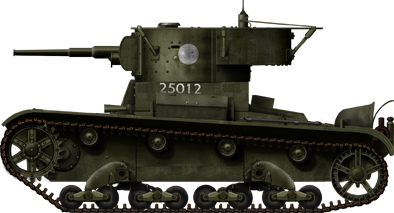
T26 M35 Radio version of the KMT
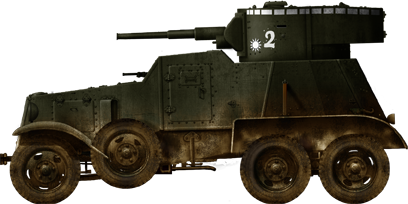
BA-10 of the KMT
-T-26 (mostly M1935s, but some M1937s)
-BA-27
-BT-5 (no photographic evidence)
-BA-3/6 (unclear which model, probably BA-6s)
-BA-20 /20M (unclear which model, no photographic evidence)
After the heavy losses in 1937 at the Battle of Shanghai and the Battle of Nanjing, the KMT appealed to the USSR for arms sales. As a result of the Sino-Soviet Non-Aggression Pact, signed in August, 1937, the USSR began supplying the KMT’s newly formed 200th Division with Soviet equipment. 83 T-26s were sold, along with small, but unknown numbers of BT-5s (at least 4), BA-27s (at least 4), BA-3/6s (unclear which model, at least two), BA-20s (unclear which model), and possibly some BA-10Ms (which are possibly misidentified BA-3/6s or BA-10Ms of the Manchukuo Imperial Army). Despite sounding impressive, Soviet arms shipments to Spain were much greater, and such a small number of AFVs would never cover the vast expanses of China from further Japanese gains. Note: Reports of BAIs and BA-10Ms also exist, but there are no known photographs of these. BAIs seem particularly dubious. BA-10Ms were used by Soviet forces at Khalkin Gol (1939) and in the Invasion of Manchuria (1945). However, at least one BA-10M saw service in the Manchukuo Imperial Army, likely leading to confusion in sources.
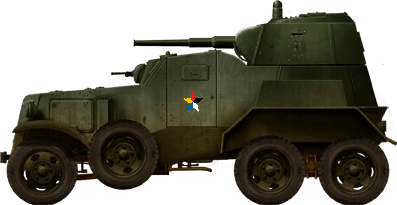
BA-10M of Manchukuo Imperial Army, February, 1940. On the crew door is a military star version of the ‘Five Races Under One Union’ flag. This vehicle was captured by the IJA at Khalkin Gol. This may explain the insistence of modern scholarship on the existence of ‘Chinese BA-10 armoured cars’.
Chang Kai-Shek Tanks & AVs

Chinese M4A4 Sherman in Burma
KMT Armored Corps, May, 1946
Figures given by “The Tank Division of the People’s Liberation Army, 1945-1955” report that in May, 1946, the KMT had the following vehicles in service:
- 55 Type 94 TK
- 63 CV-35
- 116 M3A3 Stuart
- 117 Type 95 Ha-Go
- 49 T-26
- 14 Vickers Mark E Type B
- 71 Type 97 Chi-Ha
- 67 Type 97 Chi-Ha Shinhoto
The Collaborationist army
- Renault NC-27 (Transferred from the IJA)
- Type 94 TK (Transferred from the IJA)
- Type 93 Dowa (Transferred from the IJA)
- Type 92 Heavy Armored Car (Transferred from the IJA)
- Renault FT (Inherited from the Fengtian Army)
- BA-10M (At least one transferred from the IJA having been captured at the Battle of Khalkin Gol)
A variety of locally built armored cars belonging to the Manchukuo Imperial Army are shown in photos, but there is no given names for these vehicles (let alone any substantial research into them).
A variety of railroad-borne tanks and armored cars are likely to have been in MIA inventories, too, but are not listed here due to a lack of evidence. The KMT also laid theor hands on unknown numbers of Type 97 Chi-Ha and Type 97 Chi-Ha Shinhoto, Type 95 Ha-Go, Type 94 TK, Type 97 Te-Ke, Type 95 So-Ki, Type 91 So-Mo and Type 92 Jyu-Sokosha.
The Chinese Civil War (1945-1950)
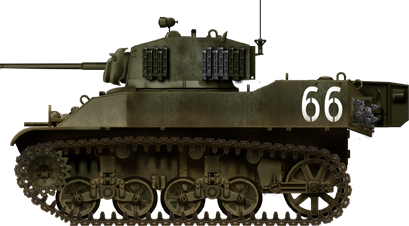
M5A1 of the Kuomintang at the Battle of Kinmen, 1949
Inherited from WW2, the KMT operated M3A1 Scout Cars, M3A3 Stuart, M5A1 Stuart, M10 GMC (unarmed), M4A4 Sherman and LVT-(A)4. Also, modified was a M10 GMC with 105mm Type 91 Field Gun.
PLA's civil war Tanks & AFVs
1950 – 300 T-34-85s, 60 IS-2s and 40 ISU-122s, which were organized into 10 regiments (30 T-34/85 medium tanks, 6 IS-2 heavy tanks, and 4 ISU-122 tank destroyers in each).1951 – 96 T-34-85s, and 64 SU-76s, which were organized into 4 regiments.
1952 – 312 T-34-85s, and 208 SU-76s, which were organized into 13 regiments.
1953 – 480 T-34-85s, and 320 SU-76s, which were organized into 13 regiments (based on a total number of 40 regiments at this point).
1954 – 649 T-34-85s, 320 SU-76s, 22 IS-2s, 99 SU-100s, 67 ISU-152s, and 9 ARVs (two of which were based on the ISU chassis, the others likely being T-34s).
1955 – No figures are given by Dr. Andrew, but there were sales in 1955.
72 additional armored recovery vehicles and engineering vehicles were also supplied at unknown dates, probably around 1952-1953.
Total 1950-1954: 1837 T-34-85s, 82 IS-2s, 40 ISU-122, 67 ISU-152, 99 SU-100, 704 SU-76. A total of 2829 tanks, (excluding ARVs and engineering vehicles) organized into 67 regiments. Over 3000 vehicles are reported to have been supplied to the PLA from the USSR 1950-1955.

Stuarts and Japanese Models
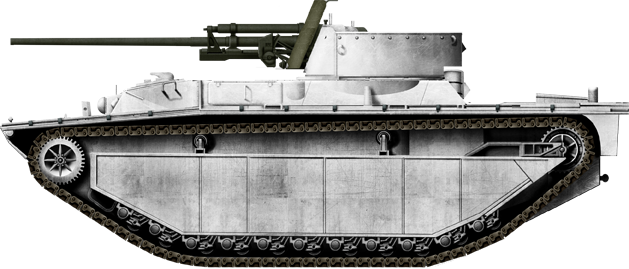
LVT(A)-4 with 57mm ZiS-2 gun (built in series)

Modified M10 GMC
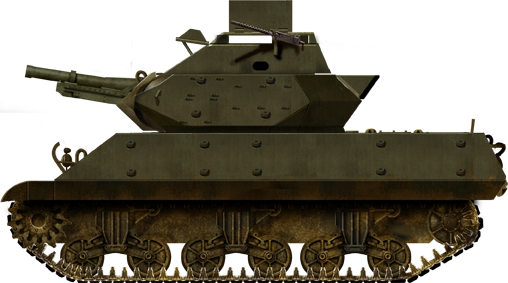
M10 GMC with a 105mm Type 91 field gun at the Battle of Shanghai, 1948. A few were so converted
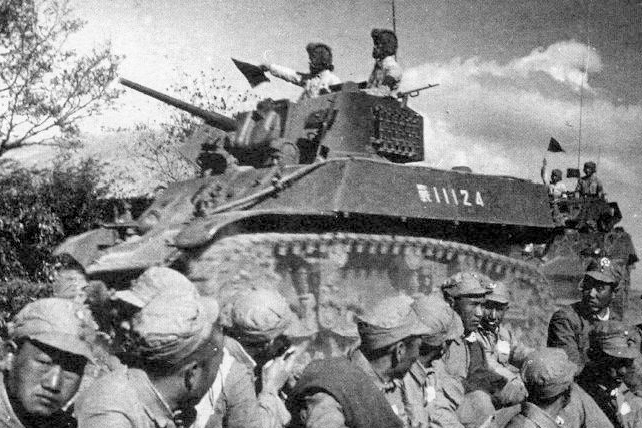
Chinese PLA M3A3

ROCA M8 Scott in Chengkungling, Taiwan.
Taiwan's tank force
M8 Scott (Taiwan only)M10 GMC (Taiwan only)
M24 Chaffee (Taiwan only, supplied in 1954)
M36 Jackson (Taiwan only, supplied in 1957)
The renewal: 1960-70s Tank Force

Taiwanese M60A3
The Republic of China acquired hundreds of M48A1/A2s in the 1960s. They were modernized to the M48A3/ROC standard in a specific way, still, have short operational range. M48A3 and M48/E48B variant with lower fuel capacity, Operational range lowered to 194 miles (312 km).
M48H/CM-11 Brave Tiger: M48/M60 hybrid variant mating the M48A3 turret to the M60A1 RISE hull. Included improved gun stabilization and new fire control system. Taiwan operate now 450 CM-11, 100 CM-12. The CM-11 “Brave Tiger” was a marriage of an upgraded A3 turret with the M60A6 hull (400 converted). The CM-12 (100 converted) were “entire” M48A3 modernized along the CM-11 standard (but apparently having an even lower operational range of 200 km). Both versions are still in service.
CM-12: M48A3/E48B variant upgraded with CM-11 FCS and weapons systems. Lower fuel capacity, range 126 miles (203km).

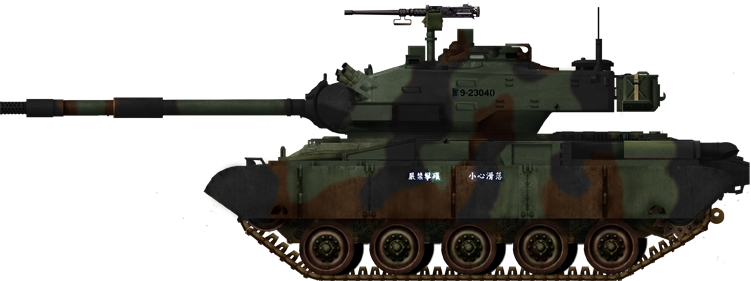
M41D: M41 modified by the Republic of China Army with a new Detroit Diesel 8V-71T diesel engine, enabling the tank to reach speeds of up to 72 km/h (44.7 mph) and increasing its range to 450 km (279 miles).[7] The turret was altered to carry a Taiwanese-manufactured variant of the M32 known as the M32K1, as well as a co-axial Type 74 (FN MAG) general purpose machine gun.[7] The M32K1 has a fume extractor and a different muzzle brake, and has been upgraded with thermal imaging sights.[7]
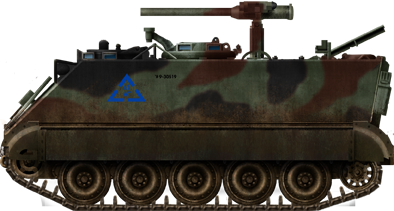
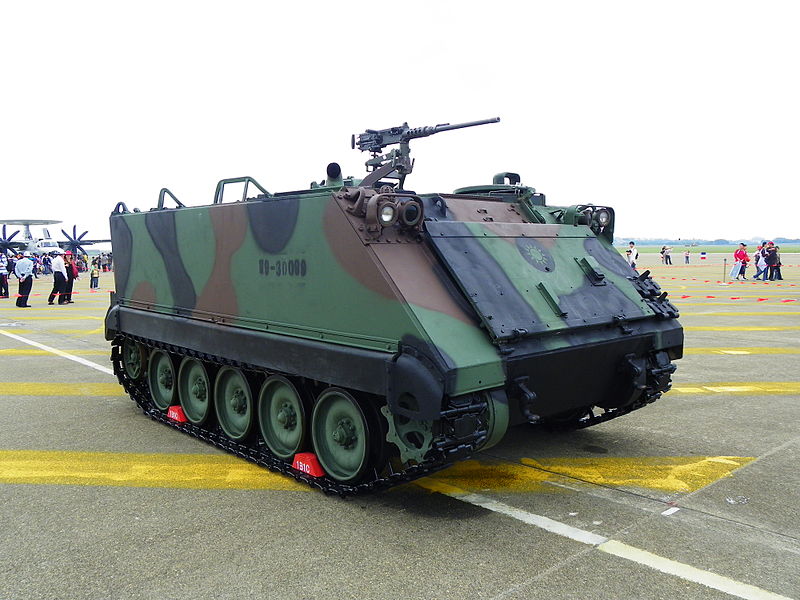
M113A2 TOW ROCA

CM-23 Mortar Carrier

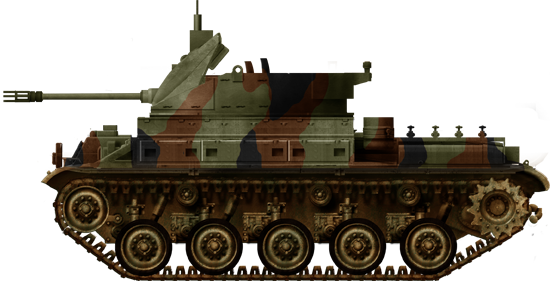
M42 Duster ()
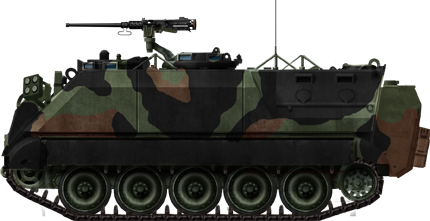
CM-21 ()

M88A1 ROCA
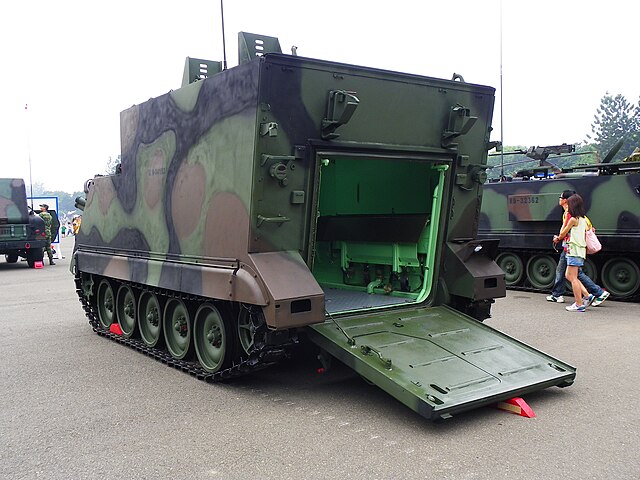
CM-26 ACP, ROCA version of the M577 Command Post

ROCA V-150S: 300 vehicles today, with the Southern Army Group, 298th Mech Inf Brigade.

M108 SPH - 60 in the inventory 1970s
M110A2 SPG - Still 60 in the inventory 2020
M109A2/A5 SPG - 197 and 28 in service 2020. Also, for soft skin trucks, the RT/LT-2000 and Kung Feng VI SPRL are in service

MIM-72: 40 in service with Southern Army Group only, 646 rounds of MIM-72F, 302 rounds of MIM-72E/G/J
Modern ROCA AFVs
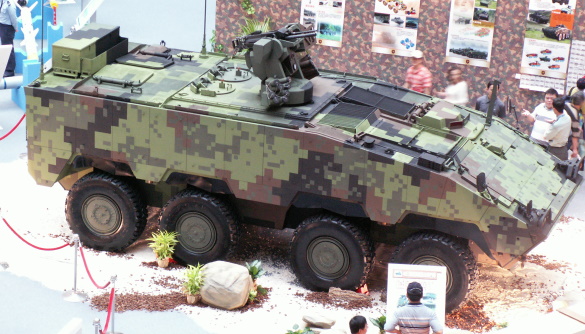
CM-32 AV Clouded Leopard (2002) Collaborationist Chinese Army
Main article on Tank Encyclopedia

Cold War Tanks


































Cold war tanks posters

Cold War Main Battle Tanks

Cold War Soviet Army
